The goal of the Forest and Sustainability project is to link the UN’s Sustainable Development Goals (SDGs) using our forests as a common thread. We seek to associate air and water quality with the woodlands in order to make young people aware of how important these resources are in the struggle against climate change.
THE FOREST, a very great example of grow in harmony with key ecosystem services around the planet. The greatest and most beautiful things in life ... grow in silence ...
The goal of the Forest and Sustainability project is to link the UN’s Sustainable Development Goals (SDGs) using our forests as a common thread. We seek to associate air and water quality with the woodlands in order to make young people aware of how important these resources are in the struggle against climate change. The project is aimed at secondary-school teachers and students as well as society in general (students’ families). Participants are encouraged to take part in several activities they can complete online using open-source software. They learn about the SDGs through a key resource—our forests—and by studying their immediate surroundings, town or county. Students from all social backgrounds can take part, both urban and rural communities are included.
The project has grown thanks to a real process of co-creation with the teachers of secondary school participants, it is an excellent example of Citizen Science and Open Science Schooling with different stakeholders involved. Several documents were needed to make the project possible; specifically, six “Activity Documents” with a common aesthetic to show that they were all part of the same project. The students study the water and air quality in their area, and realize that their daily water and energy consumption—including electricity, heating and transport—has a big impact and can be reduced with a simple change of habits. Using the data collected, they can evaluate whether there are sufficient green spaces nearby and assess the level of pollution they are exposed to. Participation in the project means that students ask themselves questions, which they alone cannot answer, and force them to interact with the community: family, public administration, companies...
The project involves no physical transformations. Rather, it is an educational initiative that makes students empower to create positive changes in the world with their actions in their immediate surroundings.
Please highlight how the project can be exemplary in this context
The goal of the Forest and Sustainability project is to link the UN’s Sustainable Development Goals (SDGs) using our forests as a common thread. We seek to associate air and water quality and the woodlands in order to make young people aware of how important these resources are in the struggle against climate change (see Fig.1). The project has been developed by EXPLORATORI of natural resources, a research group of Universitat Politècnica de Catalunya.
This project is aimed at secondary-school teachers and students as well as society in general (students’ families). Participants are encouraged to take part in a series of activities they can complete online using open-source software. They learn about the SDGs through a key resource—our forests—and by studying their immediate surroundings (their town or county). The Activity documents developed are:
1. Working on the SDGs through forests: a guide for teachers.
2. Studying water quality and consumption (forests and water): evaluating water quality and determining your water footprint.
3. Studying air quality and CO2 emissions (forests and air): evaluating air quality. Determining the tons of CO2 generated by your heating, electricity, water and transportation, as well as your total carbon footprint.
4. Studying woodlands (forests and cities): evaluating wooded areas and whether or not they can absorb sufficient CO2. The relationship between water, air and forests.
5. Studying forestry management (sustainable management): evaluating the situation worldwide in comparison with your county and country. The role of women in forestry management.
6. Experimental activities: citizen science projects with fieldwork and hands-on activities to evaluate the quality of water and air in your immediate surroundings, with the workshops ‘Explore Lichens’, ‘Explore Riparian Forests’ and ‘Explore Water Quality’.
https://exploratori.org/index.php/component/sppagebuilder/?view=page&id=133
Please highlight how the project can be exemplary in this context
A series of documents were needed to make the project possible; specifically, six “Activity Documents” that were originally prepared in Word and PDF format. The project also made use of digital tools such as the Greenhouse Gases (GHG) calculator and a system for collecting results that originally used Excel spreadsheets.
Taking into account the intended audience, it soon became clear that we needed to use graphic design to make these materials more attractive and motivating. It was very important that the Activity Documents share a common aesthetic to show that they were all part of the same project, and a graphic designer redesigned all of our contents to this end. Furthermore, the resulting format allowed participants to work entirely online, without the need to print out any of our documents. Since this is a clear advantage, the documents were designed largely to ensure they would be attractive in a digital format (see Figures 2, 3 and 4 with the covers of the documents).
First, the six Activity Documents were adapted to make them much more visually pleasing. Second, all Excel spreadsheets were transformed into Google Forms documents with the addition of eye-catching photographs and other complements. Finally, a simplified, more pleasant adaptation that included images was prepared for the GHG calculator.
Science and technology are often seen as harsh and unpleasant, particularly for young people. As a result, it is very important to make these topics more attractive with interactive, up-to-date, aesthetically pleasing formats.
On the other hand, the project has an intrinsic beauty because promotes the study of a very important natural resource: THE FOREST, a very great example of grow in harmony with key ecosystem services around the planet.
The greatest and most beautiful things in life ... grow in silence ...
Please highlight how the project can be exemplary in this context
This project is an excellent example of Citizen Science and Open Science Schooling (OSS). Here, OSS includes several sectors of society and stakeholders such as the University; secondary schools and their teachers, students and families (co-creation project); local and regional administrations (town councils and the Department of Education of the Government of Catalonia); and local businesses.
Teachers from participating schools take part in the project with their feed-back to applicant. The project has grown thanks to a real process of co-creation with the teachers of secondary school participants.
Students from participating schools take part in the project, evaluating the quality of the water, air and green spaces in their local area. They can access all data they need to do so through open-source software generated by the public administration of Catalonia. An earlier stage of the project did make use of programs that needed to be downloaded, but this led to problems since some participants did not have the required computers (Chrome Books). As a result, online materials were prepared and the software used was adapted to make the project as inclusive as possible. Now, students can participate online without the need for a specific type of computer.
After they analyse their local area, participants learn about their own impact by looking at their consumption of water, electricity, heating and transportation. To do so, students review the water, electricity, heating and fuel bills provided by their families. The resulting data is collected online using Google Forms, Kahoot! and Mentimeter. The analysis of the results and final reflections can be completed in the classroom using data tools provided to schools that convert their data into graphs. Using a common template, these graphs are then used to make an infographic, and the infographics produced by different participants are presented in a final session.
Please highlight how this approach can be exemplary
The project’s name makes its relationship with sustainability very clear. The goal of the project is to promote the SDGs using the environmental impact of our actions in forests as a guiding thread. Although the key SDGs are 4 and 15, these are used as a path to the others—particularly SDGs 6 and 13. The 2030 Agenda reflects the importance of an appropriate educational response. Education is explicitly formulated as a stand-alone goal: SDG 4. Education is both a goal in itself and a means of attaining the other SDGs. Not only is it an integral part of sustainable development, it is also a key enabler; this is why education is an essential strategy in the pursuit of the SDGs. Education for Sustainable Development (ESD) is explicitly recognized as part of SDG 4. It is part of Target 4.7 along with Global Citizenship Education (GCED), which UNESCO promotes as a complementary approach.
Our objective is for our young participants: To become aware of their power to change the world on an individual and collective level within the context of society as a whole. To emphasize the need to preserve our forests. To understand that sustainable management is key to maintaining our forests’ natural resources. To become aware of two lines of action in the struggle to fight climate change and conserve our natural resources: resource management in forests, and control of our consumption of energy and water.
The materials used are designed to be aesthetically pleasing and to motivate our students. Nevertheless, the importance of aesthetics is much broader. This project promotes the value of forests as key to the preservation of our ecosystems, and the interaction with the air and water that surround us provide the project with an intrinsic beauty.
The project can be completed online using any sort of computer. Students from all social backgrounds can take part, and both urban and rural communities are included. Field trips visit either rural forests or urban areas with trees.
The results of the project have been spectacular, and have reconnected many students with nature—particularly those living in urban areas. Most of the teachers who take part are eager to repeat the experience with new students.
Participation in the project has also allowed students to enter into direct contact with their immediate surroundings and to evaluate whether there are sufficient green spaces nearby and assess the level of pollution they are exposed to. As a result, students become actors in the struggle against climate change—it is important to remember that they are the ones with the biggest chance of changing both the present and the immediate future. This project helps them to realize that something as simple as turning on the tap has effects that go far beyond water consumption; for example, it also consumes energy. Students also realize that their daily energy consumption—including electricity, heating and transport—has a big impact and can be reduced with a simple change of habits.
This project helps to develop students’ capacity to do research, ask questions, be critical and make decisions. These decisions can be applied in their own homes and can involve their entire family. Small changes and actions on a local level can have repercussions on a global scale.
The impact of the project on the participating students has been evaluated from a pre-test and a post-test that allows verifying the effect of carrying out the project. In addition, to evaluate the impact, a questionnaire is carried out among the participating teachers. These results have been presented at several congresses (6 publications) and in some scientific articles (2 publications).
The Figure 5 shows the areas of Catalonia where the project has been implemented (50 Secondary schools, 110 teachers involved and 1.400 student participants). The Figure 6 shows images that participants shared in social media when they participate in Citizen science activities.
Please also explain the benefits that derived from their involvement.
Our project has grown a great deal thanks to our participating schools, and some of them have even taken part in and won contests with their results. This project has become a team effort between the University that initially developed it (the applicant) and participating secondary schools. Each year, teachers complete a training course lasting from October to April and recognized by the Department of Education. Although the teachers are the recipients of this training, they also play an active role with the feedback they supply; this includes new proposals and solutions to possible inconveniences.
As for participating students, this project allows them to learn about their immediate surroundings: the quality of air, water and forests. To this end, they use both data provided by the administration and data they collect themselves in hands-on citizen science projects: Explore Lichens, Explore Riparian Forests, and Explore Water Quality. These three projects perfectly complement the work students do in the classroom (see Fig.6).
Most young people are entirely unaware of how much water, electricity and fuel is consumed in their household. To learn more about this they need help from their families, and this opens the project up to a much larger part of society. The evaluation of the resulting data is key to learning how we contribute to Greenhouse Gasses in our daily lives; it makes participants aware of the urgent need for a change in habits and the role played by forest management in reducing climate change. Many possible changes in habits involve building where we live as factors like insulation, heating systems or building materials. These factors often involve new products made from the raw materials our forests can provide, such as building materials or biomass for heating. Participation in the project means that students ask questions, which they alone cannot answer, and force them to interact with the community: family, public administration, companies...
This project involves no physical transformations. Rather, it is an educational initiative that makes students empower to create positive changes in the world with their actions in their immediate surroundings. This improvement is connected to the struggle against climate change and helping students see that the natural spaces that surround them—be they forests or urban parks—are key to improving our welfare. Forest management plays a key role, and our young people realize that preserving these natural spaces benefits water quality, air quality and biodiversity while also making our cities more liveable.
This project is focused on the participants’ local area (municipality or county) and encourages them to make changes in their everyday habits. Small, local actions (saving water and energy, new diet, mobility...) can help deal with more global challenges such as climate change. This is why it is so important to work on the realtionship of the different SDGs, which are key to the entire project. The final activity document on forest management includes a change of scale, going beyond participants’ immediate surroundings and taking a look at different regions of the world facing serious deforestation problems. This is used to show the importance of appropriate forest management. Here, the gender-based perspective can also be introduced: in some of these regions, the women are the ones responsible for collecting the forest materials that provide their homes with energy.
In the final session, participants share their results with other members of the local community such as municipal authorities or businesses. Students need to be able to show the results of their research on air and water pollution in their local area and the connection between this and local forests, calculated as m2 of green spaces per inhabitant. This way, our young people can even have an impact on matters like the need for more green spaces in their cities.
This project includes a series of innovative elements, starting with the learning and teaching methods used. In the 21st century we should not be asking ourselves what to teach, but rather how to teach. Traditional education divides content into subjects, making it impossible to deal with challenges from the real world. Our society is faced with problems that include a whole range of different subjects; they need to be addressed holistically. Our project allows for a way of working that is developed through Open Science Schooling, and involves a range of different stakeholders: the University, secondary schools (with their teachers, students, and families), the administration (the Department of Education, local city councils...) and businesses. This connection with the real world inspires students and gives them meaning. It also pushes teachers to work together on different subjects (chemistry, physics, biology, mathematics, experimental sciences, technology and even social sciences...).
Furthermore, this project is based on Citizen Science. The research group (applicant) automatically receive data provided by young students from across Catalonia. The online platform for sharing knowledge, tools, training and resources makes this process much simpler. In fact, Citizen Science is sometimes described as "public participation in scientific research"; it is participation in research by the community, for the community. At the final presentation, participating schools share their results. This provides a clear look at the current circumstances in Catalonia, and the applicant takes part in the final conclusions of each edition, because the project is linked to a doctoral thesis that evaluates the impact produced on the participating students.
Another innovative aspect is that the follow-up of the project through a teacher training course allows the project participants to be co-creators and provide feedback. In this way, the project improves with each new edition.
Please provide clear documentation, communication of methodology and principles in this context.
The methodology of learning applied in this project can be replicated in many other parts of Europe. The European Commission promotes the application of Open Schooling in a whole range of initiatives such as Erasmus+, and the applicant has used this methodology in this project of our own in Catalonia promoting Open Sicence Schooling. The participation of society through Citizen Science projects can also be applied anywhere.
As for the subject of the Forest and Sustainability project, it allows us to deal with essential issues such as water quality and conservation, air quality and energy conservation, the evaluation of forested areas and forest management, which are all very current and of interest to any community fighting climate change. Any European secondary school could replicate the project in their local setting. This is the appeal of this project: a topic associated with sustainability and the SDGs from the 2020 Agenda can be studied aywhere. The challenges involved directly appeal to a key part of society—our youth—who become actors, pushing their families to adopt the change in habits that is so essential to dealing with this great global challenge. The key to motivating our youth lies in getting them involved in solving real problems that affect their community. They can be able to evaluate the status of their town in order to be critical and feel the need to change towards a more sustainable society and cities more in tune with nature.
We must also take into account that this project is already well-established but entirely dynamic, and can continue to grow in the near future. If it receives this award, it will be able to include other aspects like evaluating forests from the classroom, additional studies on the energy status of the school itself, or the capacity of the trees on school grounds to absorb the CO2 generated by students and teachers on their way to school.
Attached are 3 of the 6 Activity documents used, in order to show examples of the type of material being worked on with the students participants in the project.
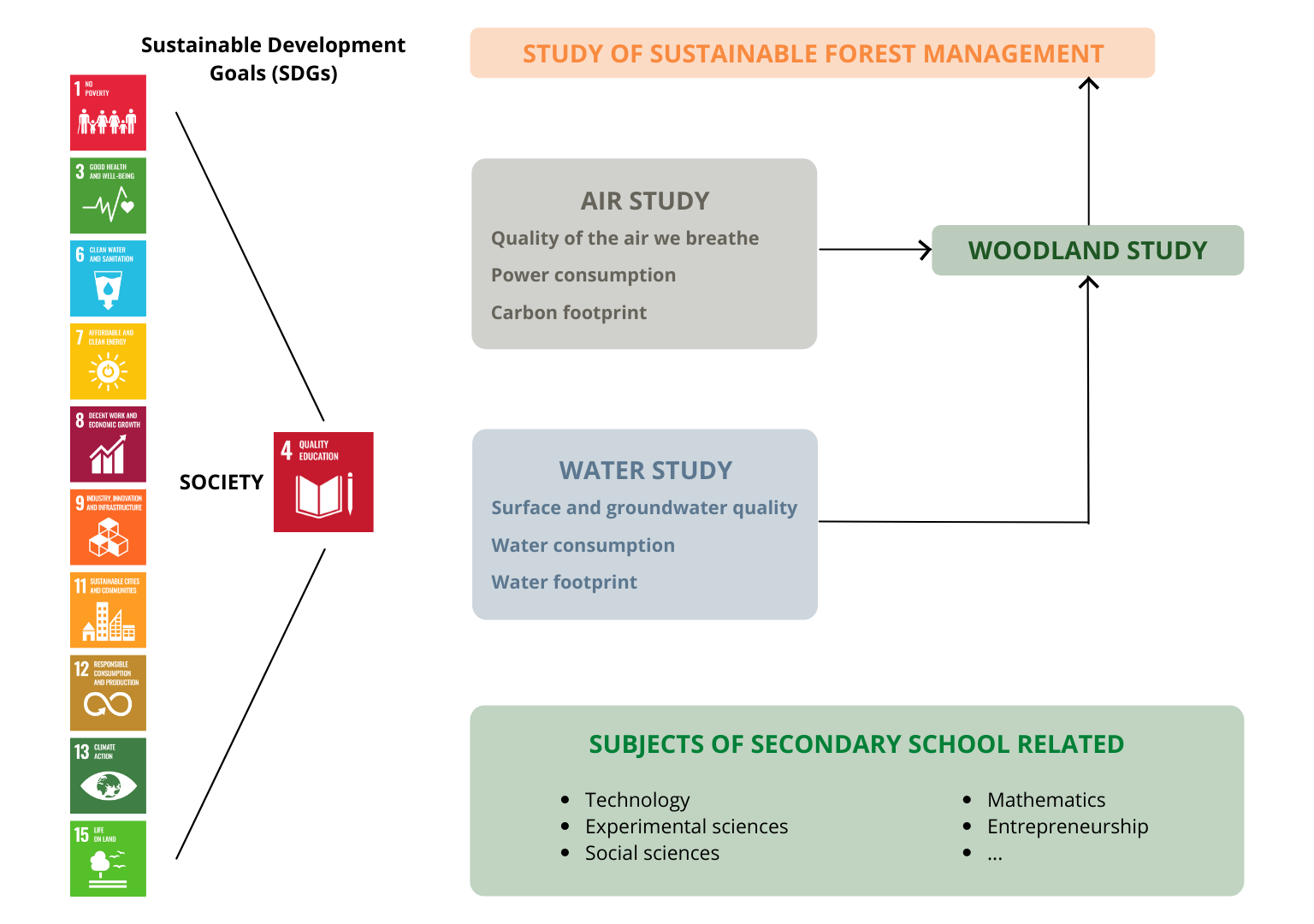
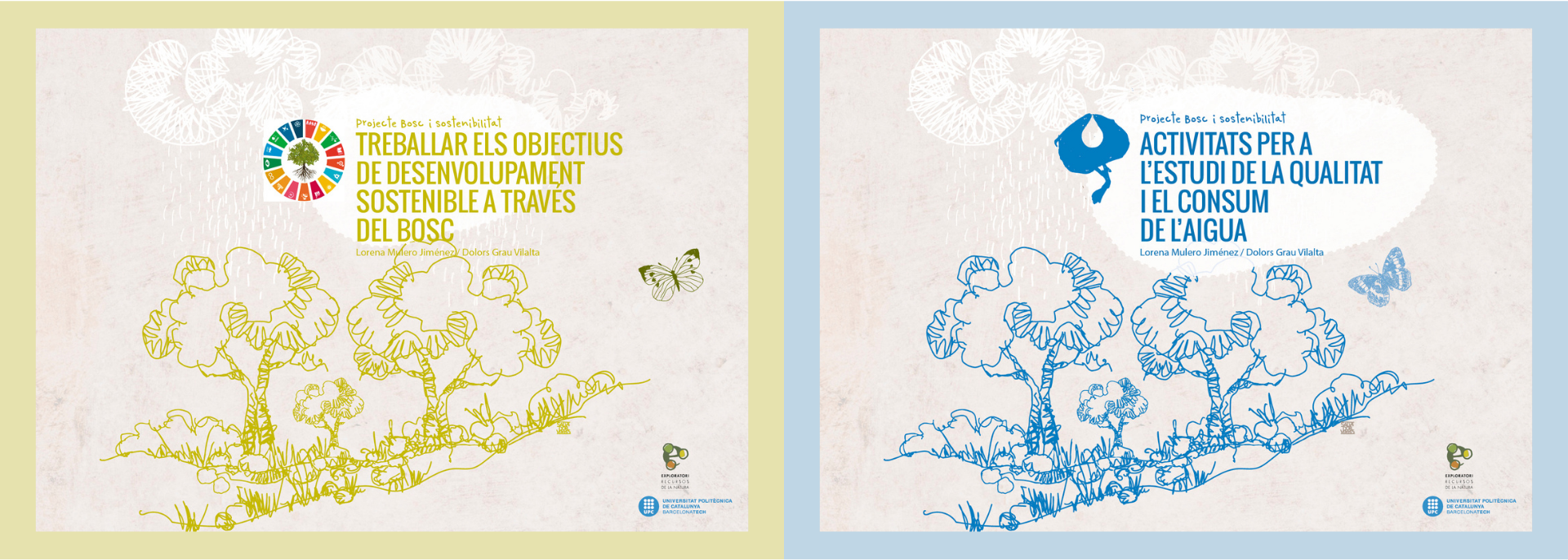
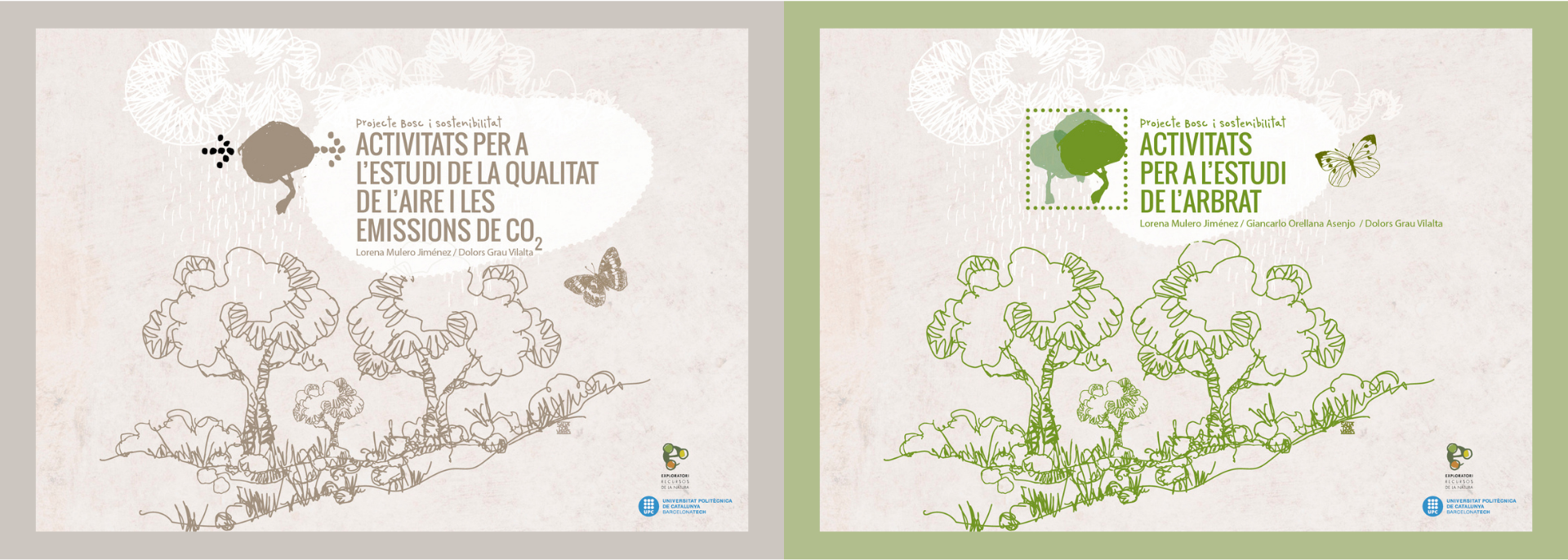
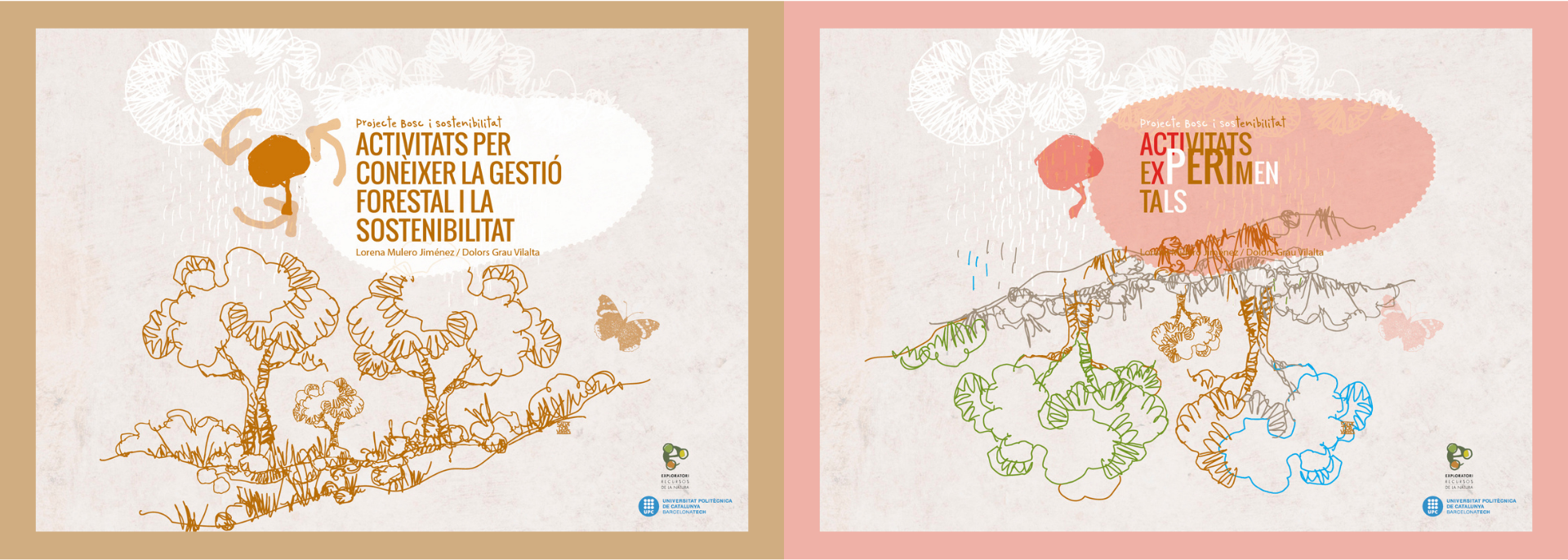

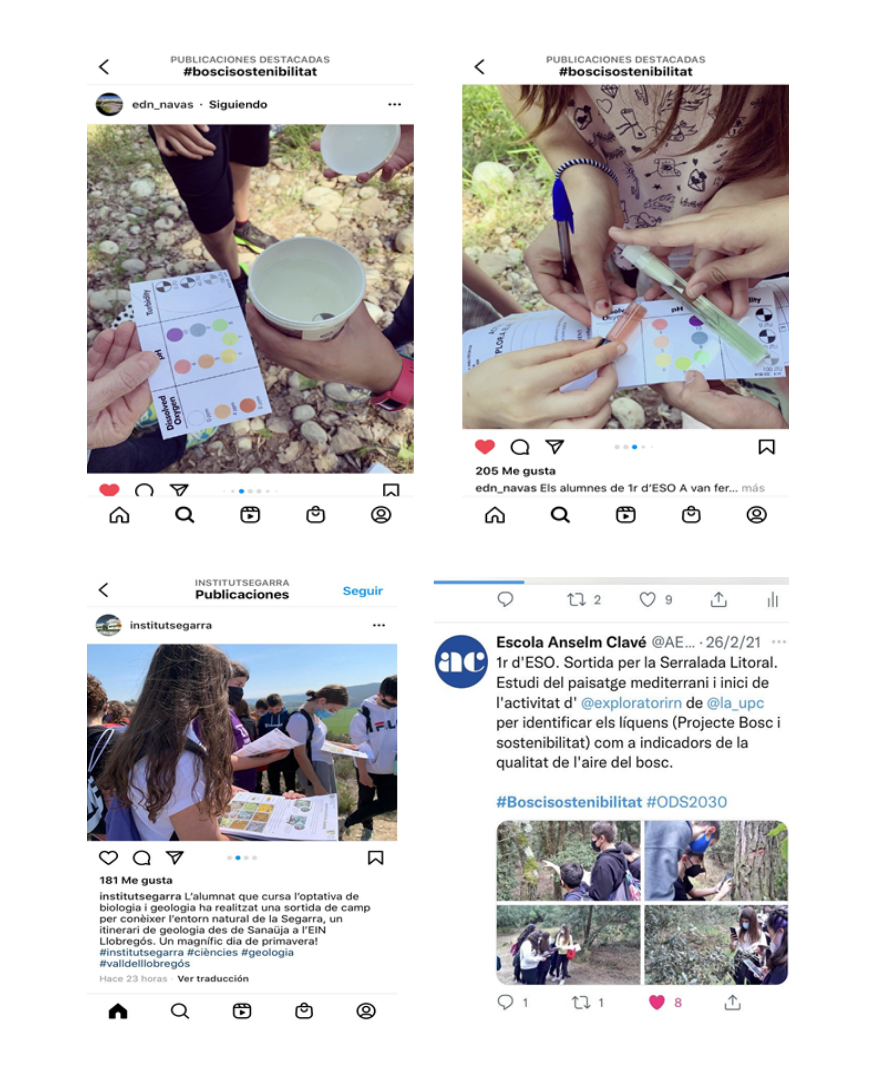
@DolorsGrau, 2021
Content licensed to the European Union.